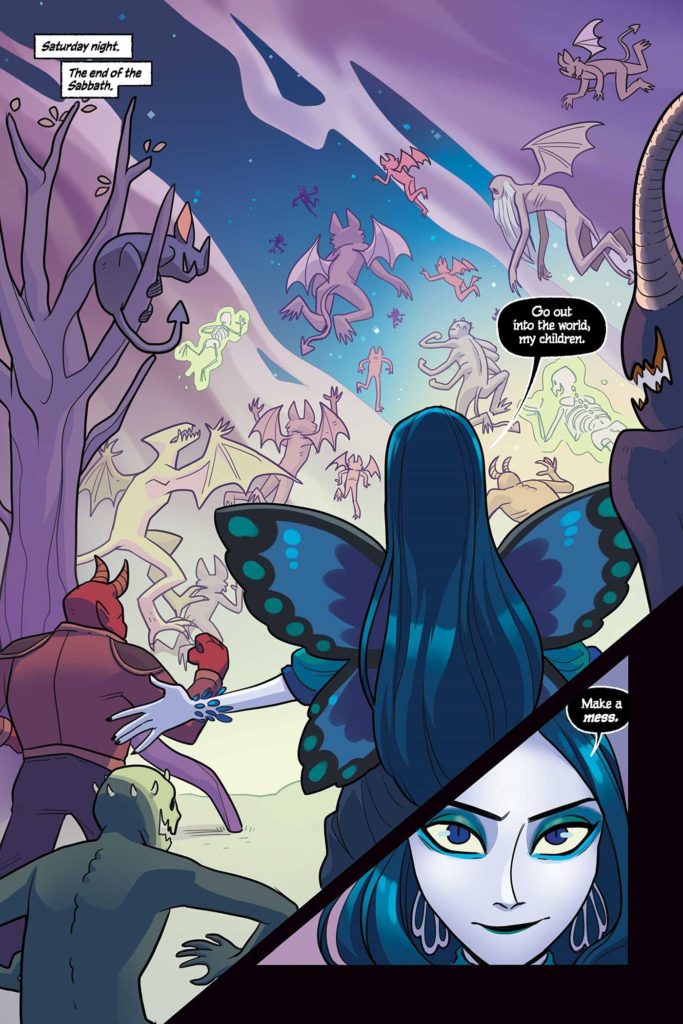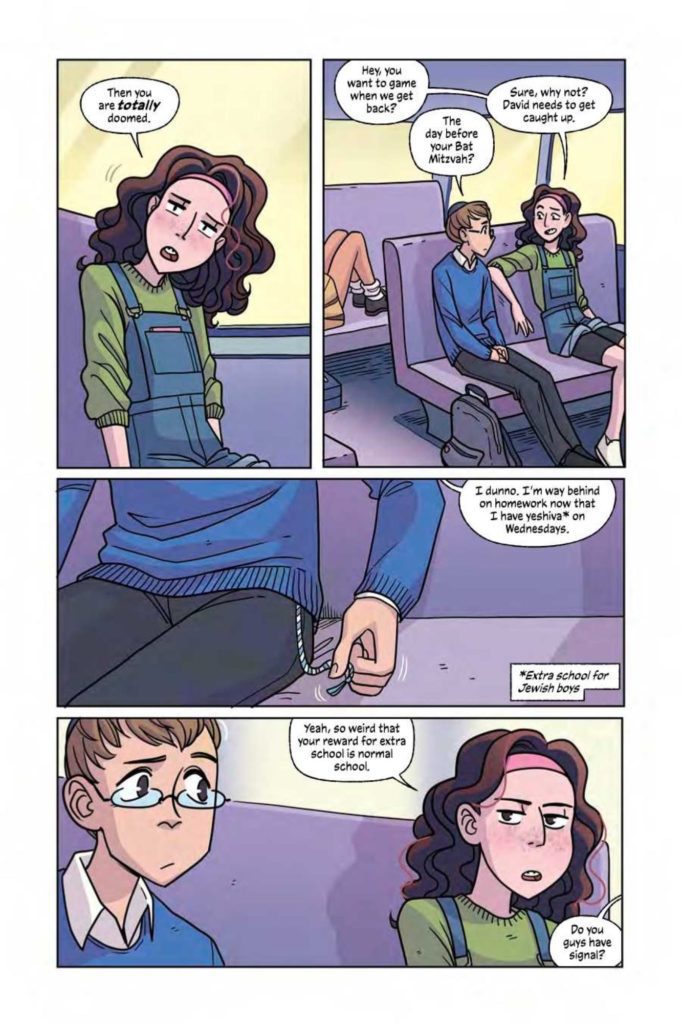If you ever wanted The Neverending Story re-made with Jewish themes and characters, The Unfinished Corner is your answer. Available now from Vault Comics’ middle-grade imprint, Wonderbound, The Unfinished Corner is an adventure graphic novel following four kids and an angel. They travel through dimensions, seeking to find and finish God’s legendary unfinished corner of the universe. This marks the debut of writer Dani Colman. Her collaborators include illustrator Rachel Petrovicz, colorist Whitney Cogar and letterer Jim Campbell.
Full disclosure, Ms. Colman was an instructor of mine at Academy of Art University, and I’m quite sure she was working on this book while instructing my Writing for Comics course. At the time, I was in the process of my conversion to Judaism and trying to write my own eight-page Jewish adventure comic. That was nearly four years ago. While my script is collecting dust in my file box, I get to enjoy the product of Ms. Colman’s years-long effort.
I give you the above story in order to make a point about writing. You see, I have found it difficult to decide what exactly I want to say about my relationship with Judaism. It seems my problem lies in how relatively new I am to the faith. In my opinion, The Unfinished Corner represents a mature view of Judaism, neatly packaged into a narrative that encourages young Jews to create their own stories. That said, I wonder if I might have found my way to Judaism sooner if I had had this book as a kid.

Repairing the World
Colman’s mature, moving and timely storytelling emphasizes the theme of tikkun olam (repairing the world) and gives perspective on Judaism. However, my one issue with the book is the feeling that the third act was a bit rushed. Once the kids are granted access to the unfinished corner, it only takes one panel for the completed corner to be revealed. In fact, Miriam is hardly ever shown drawing in the book, despite art being her passion. If more of the process of finishing the corner were shown, then the third act would have had more impact.
Artistically, the team clearly had fun creating the look of this book. For one, the use of natural-looking lights and shadows lent a sense of realism to an otherwise cartoonish overall design. Furthermore, Cogar’s color palette is as diverse and vibrant as the characters. In the heavenly realms, the colors consist of cold purples, blues, pinks and greens. Not only do these colors help differentiate between realms, but they present a fantastical, playful image of what the heavens are like. It’s nothing like readers could imagine themselves.
Speaking of playful, Petrovicz’s layout gives the book a distinct whimsy. For example, one of my favorite pages of the book follows the kids as they traverse a precarious mountain. Petrovicz brilliantly shapes each panel as a rocky feature of the mountain. Hands stretch across the gutter of a panel as if it’s a narrow passage, and the top of a cliff becomes its own panel.

Coming of Age
This personality carries over into Campbell’s lettering as well. He uses broad, scratchy font for most of the SFX, but is understated when necessary. For example, when the kids are searching for the Golem of Prague, the focus is placed on the dialogue, while the sound effects are shown in small font. By doing this, Campbell effectively builds ambience within the two-dimensional space. It’s part of what makes the Golem of Prague scene one of my favorites in the whole book.
Ultimately, The Unfinished Corner is a heartwarming adventure and coming of age narrative for Jews and non-Jews alike. Also, as an adult, I can say the book has appeal for all ages beyond its target middle-grade audience. Everyone can and should find joy and inspiration from this wholesome graphic novel.

